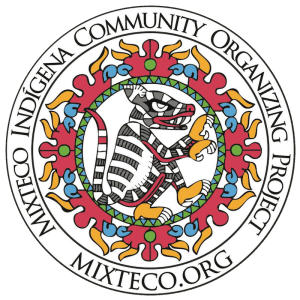How the economics of the agricultural industry leave migrant indigenous communities without access to health insurance

By: Miguel Hernandez
(Listen to our audio in Spanish and Mixteco, variant from Guadalupe Nundaca 7 min)
For people working in the agricultural industry, the irregularity of their income during high and low production seasons makes their process of acquiring health insurance a strenuous process, leaving many without health coverage. In 2024, Governor Gavin Newsom launched Medical’s expansion plan to be more accessible to low-income immigrant communities, which serves more than 1.8 million immigrants. A recent report discovered that there are more than half a million undocumented immigrants who do not qualify for medical benefits due to high income.
Although this data may sound confusing and even ironic, the reality is that there is a large population of agricultural workers who work on a seasonal and contract basis. This means that in seasons of high production, personnel who work in agriculture usually have high incomes that make them ineligible for medical but stay without coverage during times of low production.
At the forefront of the battle to ensure migrant indigenous communities with health insurance is the Health Navigators program of the Mixteco Indigenous Project. The Health Navigators program has served the community for more than four years since the emergence of the COVID-19 pandemic.
The Health Navigators program is one of the few options for migrant indigenous communites to receive help to apply for Medical in an indigenous language.
The leader of the Health Navigators program, Juana Zaragoza, originally from San Martín Peras, Oaxaca, has been with the Mixteco Indigenous Project organization for more than 13 years. In an interview with Zaragoza, she mentioned how there is great distrust between indigenous communities and social services offered by the government due to a lack of understanding and language barriers.
Regarding the lack of medical coverage for agricultural workers, Zaragoza comments:
“Currently, many people in our community are not qualifying for Medical. We are in a season of high demand for work and our community registers “high” incomes that make them not qualify for Medical.”
Zaragoza comments that an alternative to this problem is to constantly communicate income fluctuations with the state. Zaragoza shares with us that this is an unreasonable alternative since many people find this alternative very difficult due to language barriers and long bureaucratic processes.
“If I don’t know how to read, if I don’t know how to properly pronounce my name, my date of birth, I can’t access the social services system line because it’s very complicated… If I have to wait 1 or 2 hours for them to assist me, and it’s first time, it is likely that I will give up or get frustrated and it would be better to stay without medical treatment”
In addition to these linguistic barriers, Zaragoza mentions that the current medical application is 17 pages long, which can be very extensive for some. Even the application has questions that can be very difficult, such as the question of what the race of an indigenous person.
Finally, Zaragoza recommends that the community learn about the resources that can help them, such as the health navigators at MICOP, and not opt for clinics where they pay out of pocket because of the possibility that they could exploit the community’s vulnerability.
